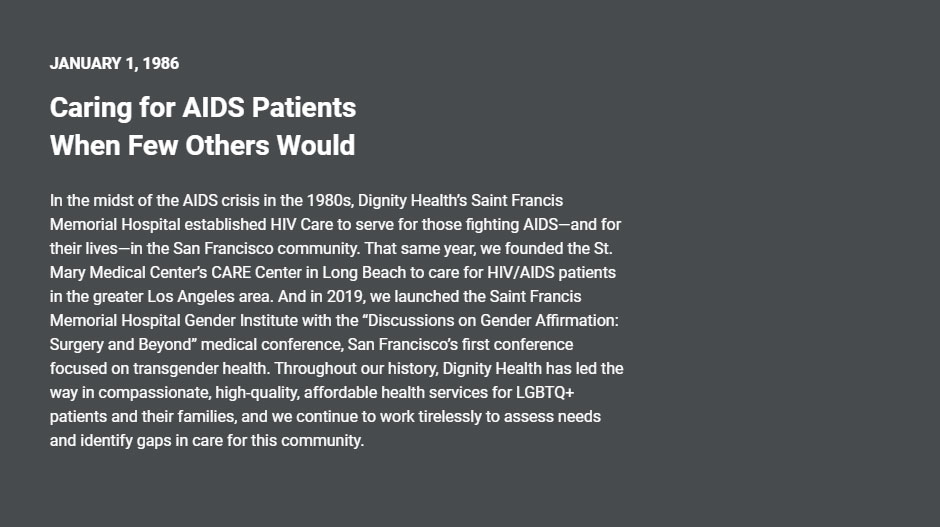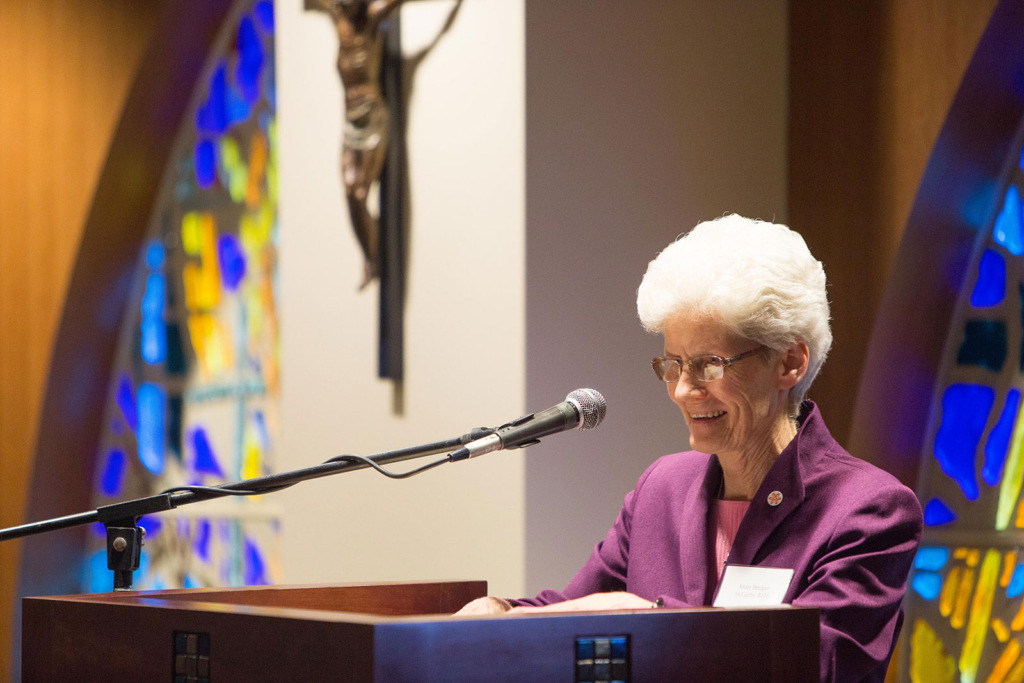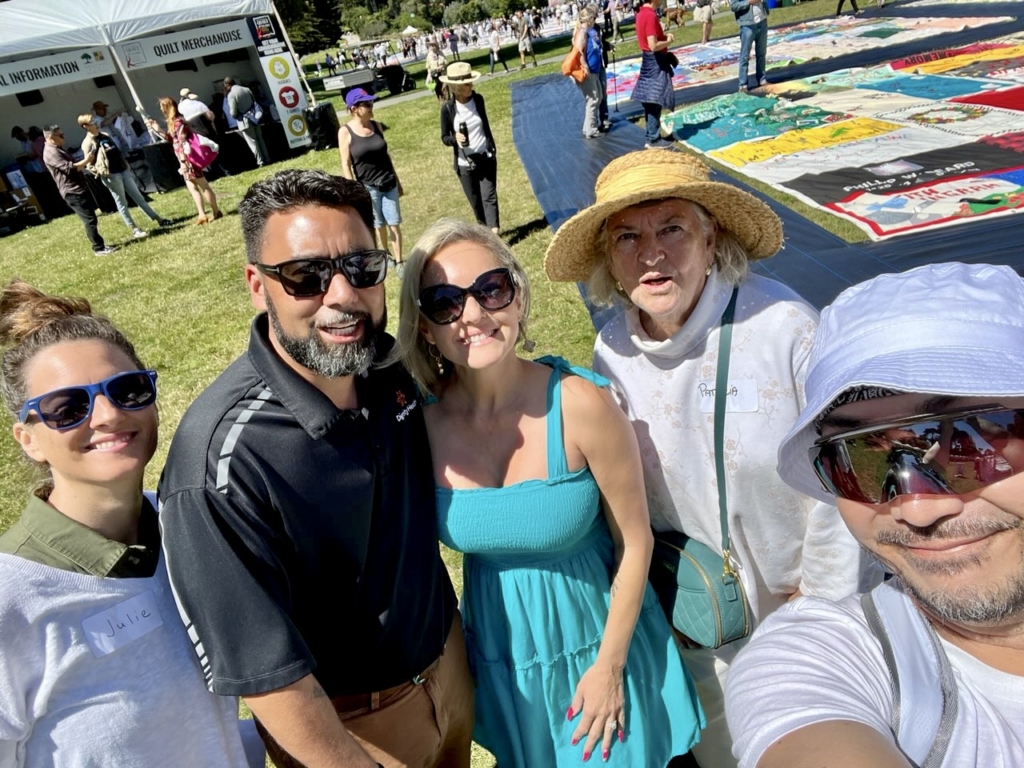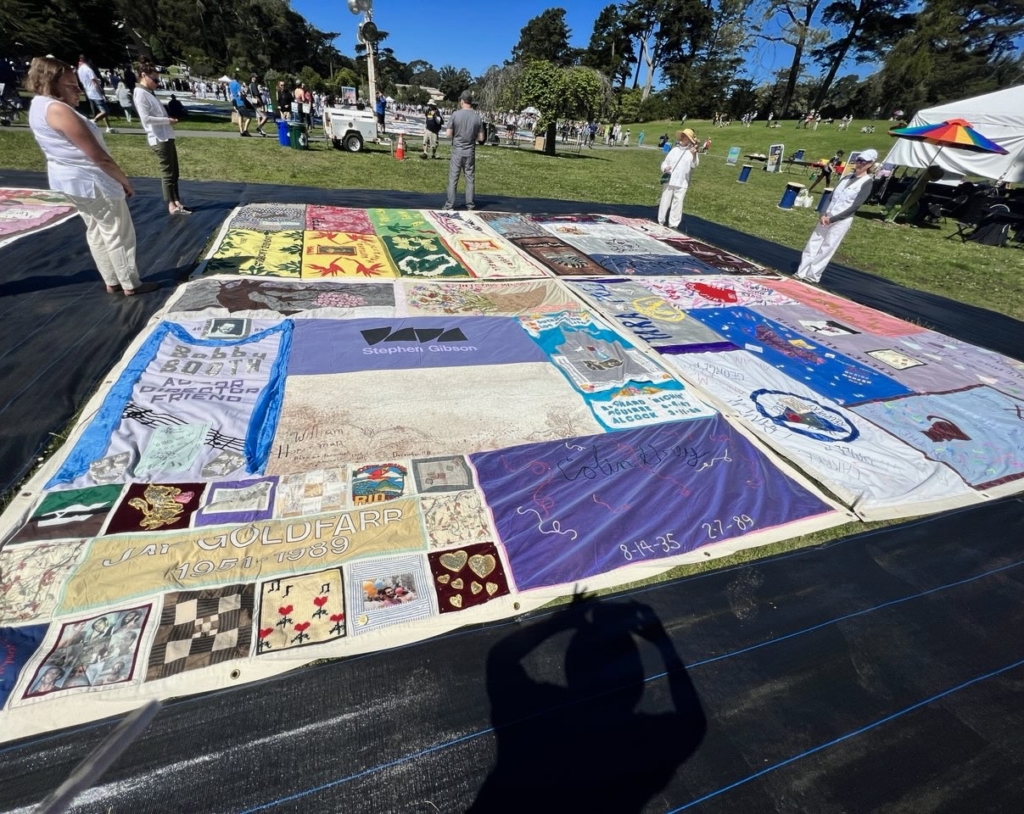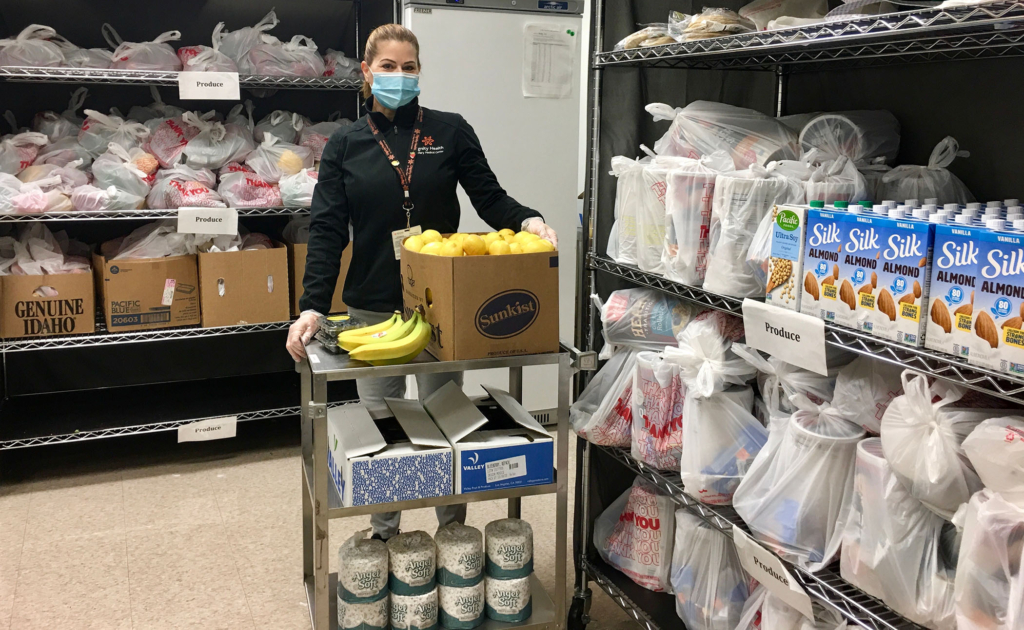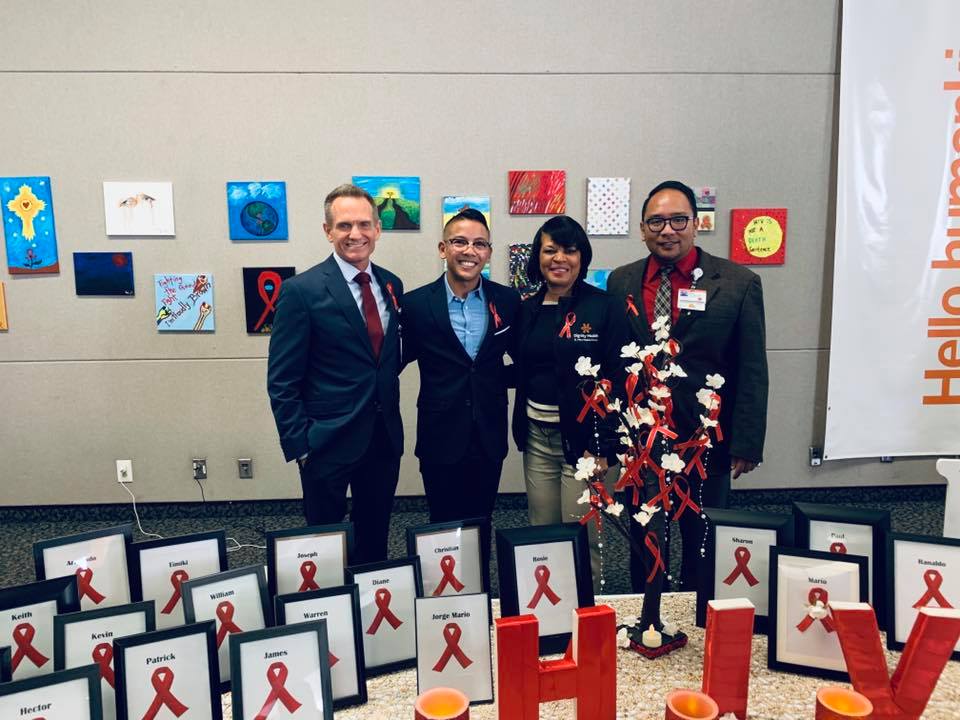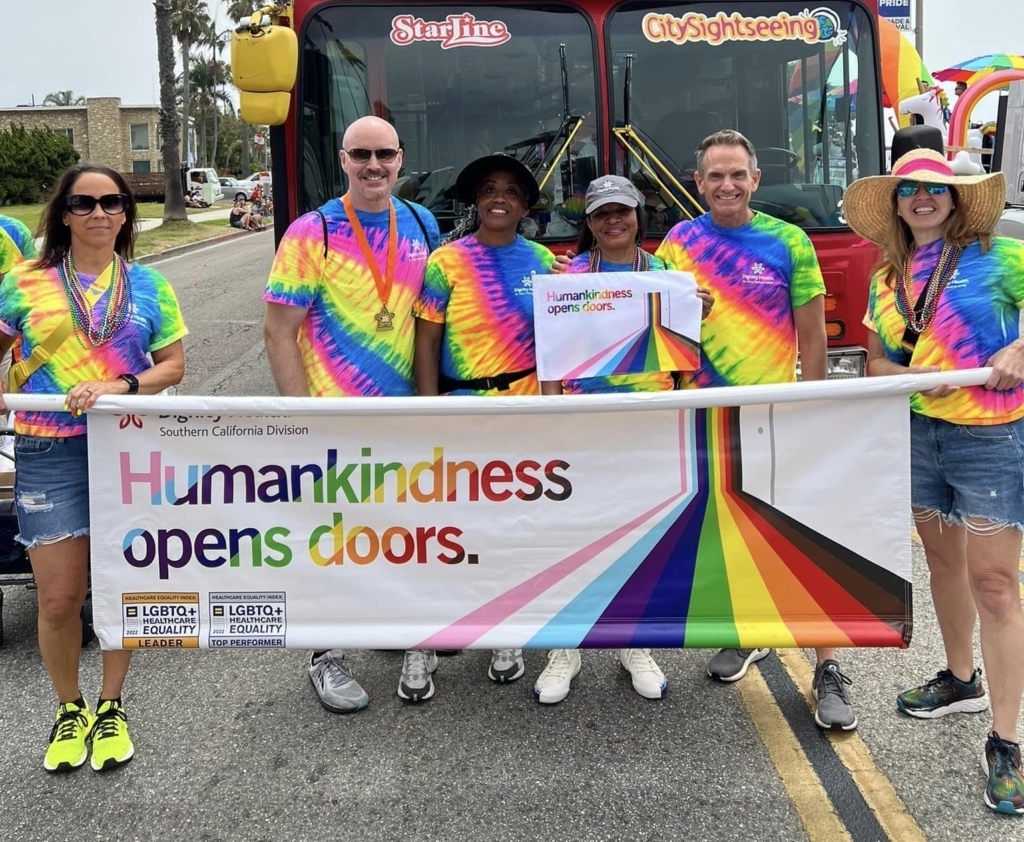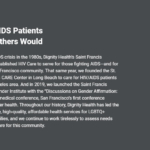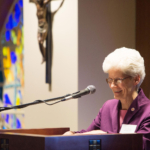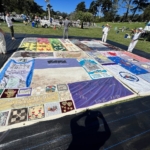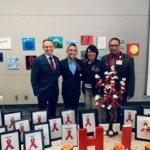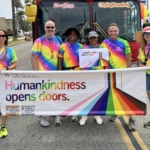Sister Bridget
Sister Bridget McCarthy recalls her work at Dignity Health (then CHW) in the early days of the HIV/AIDS epidemic.
“I was the CEO at Mercy General in Sacramento and we had retained a consultant to assess the critical needs of the HIV/AIDs Community. As a result of that work we partnered with other health systems to co-found a new medical clinic to serve AIDS patients. The formation of the Center for AIDS Research and Services, known as CARES demonstrated that local healthcare providers were willing to work together to commit resources to respond to the serious medical needs of AIDS patients.”
Now known as One Community Health, CARES continues to provide compassionate care to people living with HIV and AIDS in the Sacramento area.

